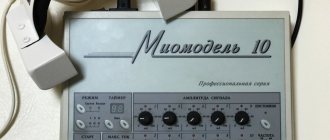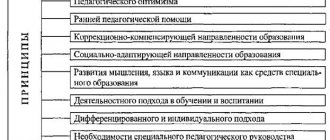For many parents, the day separating the first year of a child’s life from the second is a kind of milestone for summing up the results. They closely analyze the achievements of their children’s peers, comparing them with what their child can do and are worried if they notice a lag behind the norm. Of particular concern is the fact that a child does not speak at one year of age.
Let's figure it out, is it really important to worry if a child hasn't uttered a word in a year? When should you worry about speech delay? What can be done in advance to ensure that a one-year-old baby’s speech corresponds to the norm?
Between normality and pathology
No one needs to prove the importance of timely mastery of their native speech. This is a complex, multifaceted process directly related to various mental functions: attention, thinking, memory and speech. They expect the first words from a one-year-old baby, but he cannot even say “dad” and “mama”, he babbles in his own language and is not going to learn new words.
Alarmed parents begin to study family history, turn to doctors for advice and do their best to speed up the speech development of the baby.
A one-year-old child is able to pronounce from 3 to 12 words, but in their structure they are simple, very similar to babbling. Woof-woof, beep-bee, am-am, lalya, give, dad, mom, baba, kitty, na, bang or whoop - this is the approximate vocabulary of children per year.
Each baby is individual - some develop their first word at 8–9 months, and others at 1 year 3 months, and all these are variations of the norm.
Before the appearance of the first word, the speech of a one-year-old child went through a complex path of development. The laws of the formation of children's speech do not change over time. Today, like 100–200 years ago, not a single baby begins to speak in words and sentences until he has gone through all the stages of speech development. These stages are associated with the development of the brain, articulation apparatus and hearing.
No early development method can change the laws of nature, according to which the organs of pronunciation (articulation), hearing and the central nervous system of a person develop.
If you are concerned that your baby speaks poorly, check out the main stages of pre-language development in children under one year of age:
- 1–2 months – the appearance of intonations of pleasure and displeasure in the cry;
- 1.5–3 months – humming or hooting, when children repeat after adults vowels with the sound [g] or pronounce them independently, carefully listening to the sounds they pronounce (agu);
- 4–5 months – babbling, pronunciation of similar words consisting of several identical syllables (ma-ma-ma, but this does not yet mean the word mom);
- 8–9 months – appearance of onomatopoeia (pee-pee, woof-woof) and babbling words (kuka, tata, nanny);
- 11 months – the child uses approximately ten babbling words in the correct context, correlating their pronunciation with the situation (mom, dad, dai, bibi, etc.).
What is considered pathology? It is still too early to make predictions about speech development at one year old, however, you should start to worry if a one-year-old baby does not understand simple verbal instructions that are not supported by gestures. For example, “Give me the ball”, “Show me where the car is”, etc. Lack of response to an adult's words may be a symptom of hearing impairment or its complete absence. In this case, speech stops at the humming stage, because the child has nothing to relate his own babble to.
If urgent measures are not taken at this stage, it will be very difficult to stimulate speech development in the future. It is important to promptly contact an otolaryngologist for a hearing test. Perhaps, in case of pathologies of the inner ear, the doctor will consider it necessary for the child to wear a hearing aid. In case of serious hearing deviations from the norm, this is the only opportunity to develop and maintain speech.
Delayed speech development - symptoms and treatment
Classes with a speech therapist. The speech therapist conducts special lessons with the child on the initiation and development of speech, and helps to construct sentences correctly. Such techniques include articulatory gymnastics, sound production exercises, and play techniques, such as finger puppet theater. If a child understands phrases, his intelligence is preserved, and his speech is delayed by six months to a year, then speech therapy classes are sufficient [1][8].
Classes with a speech pathologist-defectologist differ from regular speech therapy classes. For example, a speech pathologist is able to work with children who have difficulty understanding speech and severe developmental delays. During classes, the child learns basic concepts (big/small, color, shape, size), does exercises to improve fine motor skills, and learns the names of objects to form a passive vocabulary. After mastering basic knowledge, the speech therapist-defectologist begins to develop expressive speech [7][12][15].
Comprehensive medical and pedagogical rehabilitation for delayed psycho-speech development. If a child does not understand speech well, is excitable, and has not developed social and everyday skills, then comprehensive rehabilitation may be required. In such cases, speech significantly lags behind the age norm, diction is grossly impaired, and other neurological symptoms are expressed [2]. To develop speech, neurologists prescribe nootropic drugs: Cortexin, Cogitum, Ceraxon. According to the manufacturers, the drugs activate neurons, improve the transmission of nerve impulses and eliminate the effects of hypoxia - lack of oxygen. (The effectiveness of these drugs for delayed speech development has not been proven in studies, and in the new Russian clinical guidelines for the treatment of autism, a group of experts has already described nootropics as an ineffective method of treating the disorder - editor's note at ProBolesny). B vitamins will also help normalize the functioning of the nervous system. However, it is important to remember that only a pediatric neurologist prescribes medications, taking into account the characteristics of the child, since medications can cause overexcitation and allergic reactions [2][16].
Microcurrent reflexology is a method of treating children with speech delays, approved and recommended by the Ministry of Health of the Russian Federation. It consists of selective activation of speech areas of the brain:
- Wernicke's area (responsible for speech understanding);
- Broca's area (associated with active vocabulary and the desire to talk);
In addition, influencing the frontal lobes will help develop logical thinking and form everyday skills. Treatment is carried out under the control of electroencephalography (EEG) [6][13][14].
Speech therapy massage is an effect on articulatory muscles: muscles of the face, tongue, lips, soft palate. Manipulations are carried out with sterile probes. The purpose of the massage is to normalize the tone of the muscles of the tongue, orbicularis oris muscle, and improve blood supply to the organs of articulation. The method is necessary for children with excessive drooling and impaired diction. The procedure is also prescribed to non-speaking patients, since speech may be absent due to inability to control the organs of articulation [10][13].
Possible reasons for delayed speech appearance per year
If the baby is completely healthy, there is no history of neurological diseases, but speech has not appeared at one year, most likely the reason for the delay is in an improperly organized speech environment.
What is meant by this term? It would seem that modern children are surrounded by a real stream of speech: TV, radio, cartoons, audio books and educational games for the youngest children. And parents talk a lot with their children.
The fact is that young children are not able to isolate individual words from a stream of speech. If no special purposeful work is carried out, this flow for a child sounds approximately the same as the sound of a waterfall sounds for us.
Today, speech games (Magpie-Crow, Ladushki), nursery rhymes, pestushki, songs, sayings, previously known in every family, have disappeared from everyday life. These unique simulators gently introduced the baby into the world of native speech. They were adapted to the needs of a child up to one year old, contained onomatopoeia, and were understandable to children.
Another factor in the “nutrient” environment for the development of children’s speech is communication with the mother. A silent mother or a mother who talks on the phone more often than with her own baby will not be able to replace the value of communication, which forms the speech structures of the brain, with the best educational games.
“Mowgli’s children”, “hospitalism” - all these terms denote a delay in the appearance of speech in healthy children who are deprived of the opportunity to communicate with loved ones due to their absence.
Kinds
The main symptom of the disorder is the lack of speech activity in the child. However, depending on the form of the defect, it can manifest itself in different variations and be accompanied by accompanying symptoms.
The most common types of mutism are:
- elective;
- psychogenic;
- endogenous-psychotic.
Selective mutism
It is also selective, or selective mutism manifests itself episodically, under certain circumstances. The child behaves relaxed, active, chatting incessantly in the family, but in the garden or at school, with strangers, he remains silent. That is, he retains the ability to speak and understand speech, but he does not want to use it in certain situations.
Selective mutism, as well as negativism, can manifest itself in relation to an individual or environment. In this case, the mutist withdraws, averts his eyes, “shrinks,” does not respond to someone addressing him, or communicates with gestures. This form of the disease becomes a sign of social phobia.
Typically, this form of mutism occurs in children over 4 years of age. Their speech development up to this point corresponded to the norm, and they began to talk on time.
If a defect manifests itself as a negative reaction to an individual person or circumstances, then it is accompanied by pronounced negative emotions. Against this background, the baby experiences spasms in the neck, caused by contraction of the vocal cords and clenching of the jaw. This provokes an attack of fear, which aggravates the child’s condition and contributes to the consolidation of a neurotic response to this person or situation.
At first, parents scold the silent person, interpret his behavior as whim or stubbornness. This position is fundamentally wrong. Since neglect of this circumstance leads to social disadaptation.
Psychogenic mutism
Psychogenic mutism often manifests itself in 2 forms: hysterical and logophobic.
Over-emotional children with unstable moods are susceptible to hysterical mutism. It manifests itself under the influence of a strong stressor, or it can become a way to attract attention and achieve what you want.
In front of a 10-year-old girl, a car hit and killed a man. For her it was a great shock. Her legs stopped working, she could not stand and fell. Speech was lost, she ignored all questions addressed to her. Then inhibition gave way to excitement. She started running and jumping with a smile on her face. After treatment with psychotic drugs, the consequences of the shock were eliminated.
Logophobic mutism becomes a manifestation of an obsessive fear of hearing oneself speak. More common among schoolchildren. It can manifest itself in certain cases, for example, during public speaking. Or the child has a fear of pronouncing certain words. But there are times when children are afraid to speak in principle.
The logophobic form of the defect can form for several reasons. For example, as a result of low self-esteem, when there is a fear of hearing negative feedback from others. Or as a result of chronic fatigue.
This may be a consequence of acquired fear, in which the child has instructed himself to remain silent. For example, a mother suffering from alcoholism, while intoxicated, showed physical and verbal aggression if her son approached her and began to tell or ask for something.
The language barrier also plays a role in the flourishing of logophobia when children find themselves in an area with a dialect that is new to them.
But there are also physiological causes of the disorder. One of them is halitosis, that is, a person develops bad breath, which is associated with the extensive growth of pathogenic bacteria in the oral cavity. The child is embarrassed to speak because he is afraid that if he opens his mouth, those around him will smell the stench and make him laugh.
Endogenous psychotic mutism
Such pathological silence manifests itself within the framework of endogenous diseases. Schizophrenia is a prime example of this. With this psychotic disorder, the list of symptoms often includes catatonic mutism, which is part of the catatonic syndrome. It usually manifests itself in the form of the disease of the same name and becomes a sign of negativism.
As a rule, this form of mutism is characteristic of the stage of catatonic stupor, and occurs along with motor retardation.
In addition, there are delusional and hallucinatory mutism, which appears within the framework of delusional ideas and visions, as well as manic, depressive and mixed.
Getting rid of the disorder
Recognizing the symptoms of childhood mutism and treating it poses some challenges. To establish a diagnosis, it is necessary to clearly differentiate the phenomenon from other disorders.
There is no generally accepted treatment regimen for mutism in children. An individual approach is used in each specific case. Possible methods used:
- psychotic drugs to relieve tension, relieve fear;
- physiotherapy to relax the muscles of the neck and speech-motor apparatus, which the child strains in the situation of planned communication;
- psychotherapy. Initially, individual therapy is recommended to establish contact with the little silent one. But in the future, you should still switch to the group form. Being in a team helps to establish social contact and emancipation. Group therapy may take the form of drama. Family psychotherapy is required.
But it is worth understanding that the main step to restoring a child’s speech activity is treating the underlying disease or eliminating a traumatic psychological factor. Therapy must be started as early as possible. The following situations may be indications for contacting a doctor:
- if the baby does not communicate for more than 1 month;
- the presence of speech problems under certain circumstances;
- the child hears and understands what is said to him, his intelligence is preserved. Tries to communicate with gestures and writing;
- absence of speech motor defects.
Children suffering from mutism are a special category. Despite their silence, they understand everything, are distinguished by observation and simply donkey stubbornness. The inability to speak creates tension and unrest in their inner world. They are able to swim in different guises. For example, cases of pronounced cruelty in children have been observed. The boy could come up to his mother and bite her for no reason. Other patients showed cruelty to animals.
The inability to express one's thoughts directly requires treating silent people with increased attention. Early diagnosis and assistance to the child will help to avoid social vacuum and psychosis.






